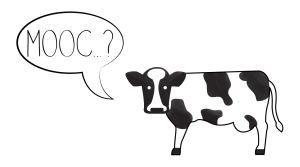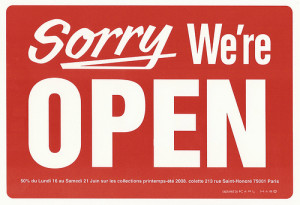 I’m been in Gujarat, India for the past 4 days, visiting VCU’s partner university in Vadodora (The Maharaja Sayajirao University of Baroda) and attending the conference on “Globalization and Localization in Computer-Aided Language Learning” (GloCALL) in Ahmedabad. Yesterday, one of the speakers, Vance Stevens (founder of Webheads in Action, an ESL community of practice), spoke about MOOCs and language learning. He cited George Siemens’ views on the ineffectiveness of structured learning, with the idea that learners should be finding their own learning paths, not following in someone else’s footsteps. Rather than swallowing down pre-digested information, the learner assembles a unique, individually designed dish, assembled from ingredients gathered from a variety of sources. In a sense, connectivist learning follows the model of how things tend to work in India: functional chaos. This is how traffic flows in India – there seems to be little rhyme or reason and few rules (most traffic lights remain on flashing yellow). Everyone has the freedom to find an individual path through the mass of cars, buses, rickshaws, bicycles, pedestrians, and cows. Instead of disorder, the chaos works. When I took a taxi to Vadodora (2 hours away from Ahmedabad), the driver often had to slow to maneuver around other vehicles or to weave through incoming traffic to make a right turn (driving is on the left in India), but he never had to stop, just kept moving.
I’m been in Gujarat, India for the past 4 days, visiting VCU’s partner university in Vadodora (The Maharaja Sayajirao University of Baroda) and attending the conference on “Globalization and Localization in Computer-Aided Language Learning” (GloCALL) in Ahmedabad. Yesterday, one of the speakers, Vance Stevens (founder of Webheads in Action, an ESL community of practice), spoke about MOOCs and language learning. He cited George Siemens’ views on the ineffectiveness of structured learning, with the idea that learners should be finding their own learning paths, not following in someone else’s footsteps. Rather than swallowing down pre-digested information, the learner assembles a unique, individually designed dish, assembled from ingredients gathered from a variety of sources. In a sense, connectivist learning follows the model of how things tend to work in India: functional chaos. This is how traffic flows in India – there seems to be little rhyme or reason and few rules (most traffic lights remain on flashing yellow). Everyone has the freedom to find an individual path through the mass of cars, buses, rickshaws, bicycles, pedestrians, and cows. Instead of disorder, the chaos works. When I took a taxi to Vadodora (2 hours away from Ahmedabad), the driver often had to slow to maneuver around other vehicles or to weave through incoming traffic to make a right turn (driving is on the left in India), but he never had to stop, just kept moving.
As is the case for outsiders encountering the traffic chaos of India, new learners in a connected learning environment, it seems to me, are likely to wonder how to make sense of what they encounter, seeking order in a seemingly random array of blog posts, tweets, and videos. There’s no doubt that successfully navigating one’s way provides a sense of accomplishment and builds learner autonomy, central to real engagement in learning. Vance pointed out in his talk that real language is complex and chaotic – there are rules but no one follows them. Rather, there are patterns that are used to create new utterances, each unique and suitable to the context of use. Language learners pull together into new combinations what they encounter in terms of sentence patterns, word usage, stock phrases, and their interlocutor’s speech, creating each time something unique and personal. In that sense, language is also functional chaos. However, the learner needs to have available some basic building blocks for creating language. If that it a first language, those are absorbed transparently. For second language learners (as adults), I continue to think that there is in fact a role for structured learning. This is particularly the case for a highly inflected language such as German or Russian, not to mention languages such as Mandarin or Arabic (for native speakers of English). It is true, though, that at some point in the learning process, the training wheels come off, and into the traffic you go.
Later today, I’m off to Kolkata and from there to visit another partner university, the Indian Institute of Technology at Kharagpur. I’ll be leaving the clean living environment of Gujarat: a dry state (knowing that, one of the conference participants from Japan brought a case of beer with him on the plane) where I have yet to see anyone smoke and where vegetarianism is wide-spread (as it is throughout India). Added to that is the spiritual side – the large number of temples I’ve walked by, as well the numerous figures in religious robes I’ve seen. Let’s hope I’ve experienced some physical and spiritual cleansing through my visit here.

